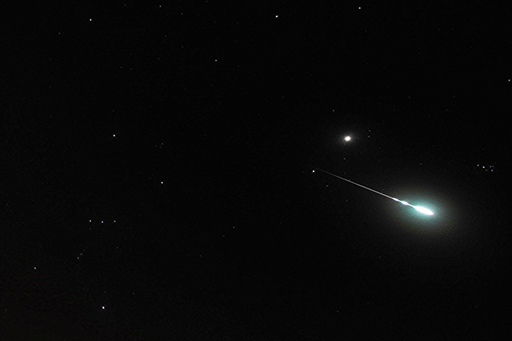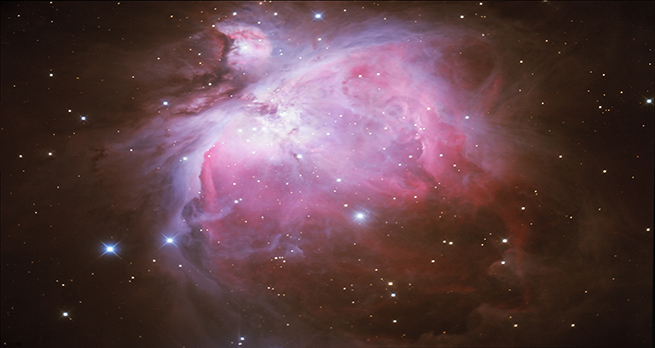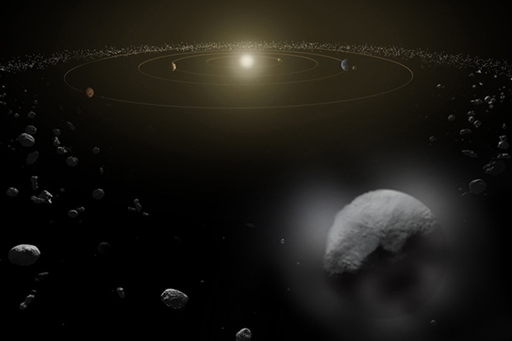4.2.5 The asteroid belt
Marking the boundary between the innermost rocky planets (Mercury, Venus, Earth and Mars) and the outer planets is a belt of rocky and metallic bodies, known as the asteroid belt.
The asteroids, also called minor planets, are not a planet that has been broken up; rather, they are the building blocks of a planet that was never assembled. The reason that the building blocks never clumped together was that Jupiter’s gravitational attraction kept pulling them apart.

The asteroids are in stable orbits around the Sun, but they do occasionally collide with each other. Fragments of broken asteroids can leave the asteroid belt, and fall towards the Sun. Asteroid fragments which land on Earth are meteorites. More often than not, a meteorite falls unnoticed – but sometimes they make a dramatic entry through the Earth’s atmosphere, as was seen with the Chelyabinsk meteorite that landed in Russia in February 2013. You can read how the BBC reported the event in the article ‘Meteor strike injures hundreds in central Russia’ [Tip: hold Ctrl and click a link to open it in a new tab. (Hide tip)] .
The final objects in the Solar System that you will encounter are comets – read on to find out about these spectacular visitors.

